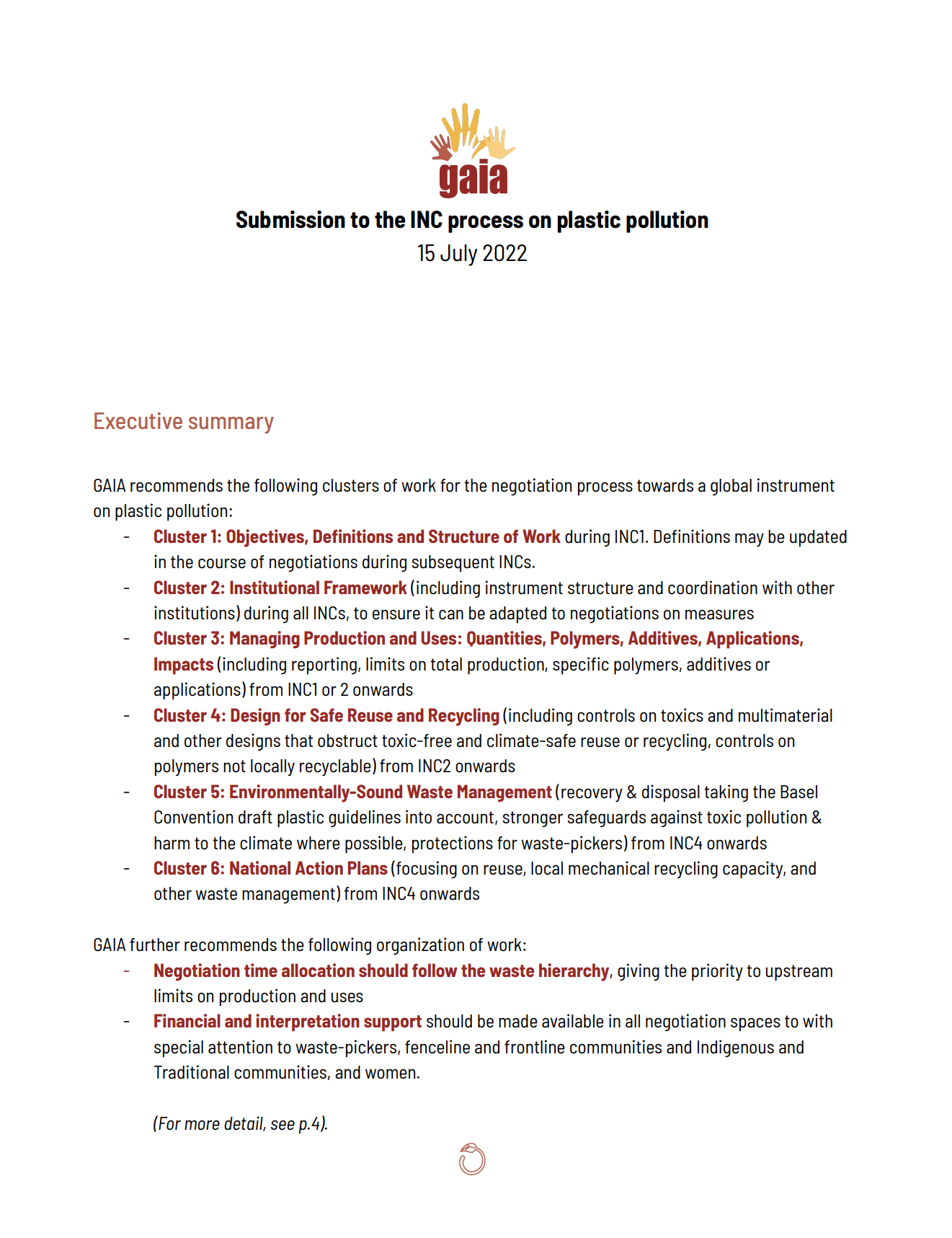
This report estimates efficiencies of generation of energy from waste for Member States which incinerate a significant share of the waste incinerated across the EU. It highlights that the energy efficiency of EU incinerators are appallingly low and the distinction between recovery (R1) and disposal (D10) incininerators is arbitrary, and should therefore be dropped from the EU Waste Directive.
Full report available in English. Executive summaries are available in English and Hungarian.
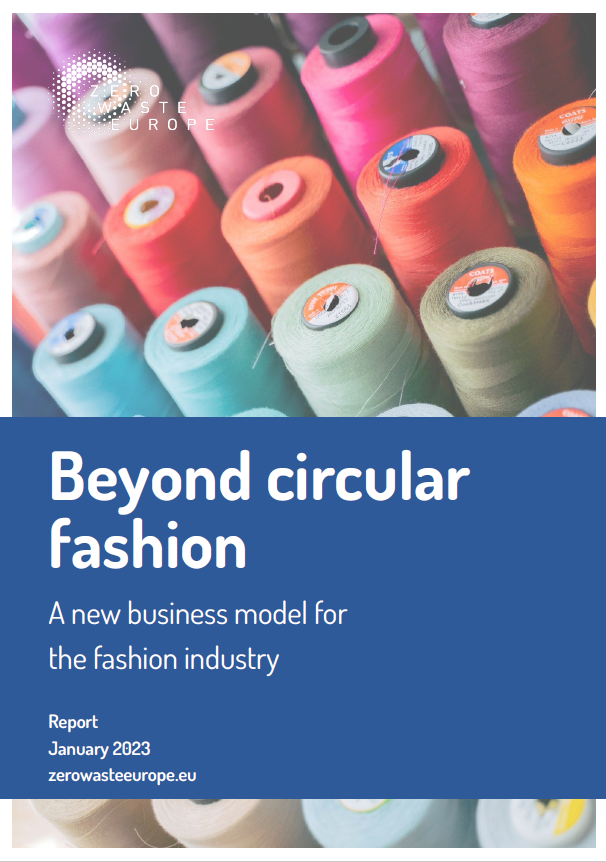
In the context of the EU Textiles Strategy, Zero Waste Europe’s “Beyond circular fashion” report shows how existing approaches and initiatives to make fashion fair and sustainable, while an important step forward, are insufficient in addressing harmful business models that rely on overproduction and overconsumption.
To comply with planetary boundaries, the report identifies 4 essential criteria that must be met simultaneously to qualify a fashion business as zero waste.
Executive summary available in English, French, and Croatian.
Full report in English.
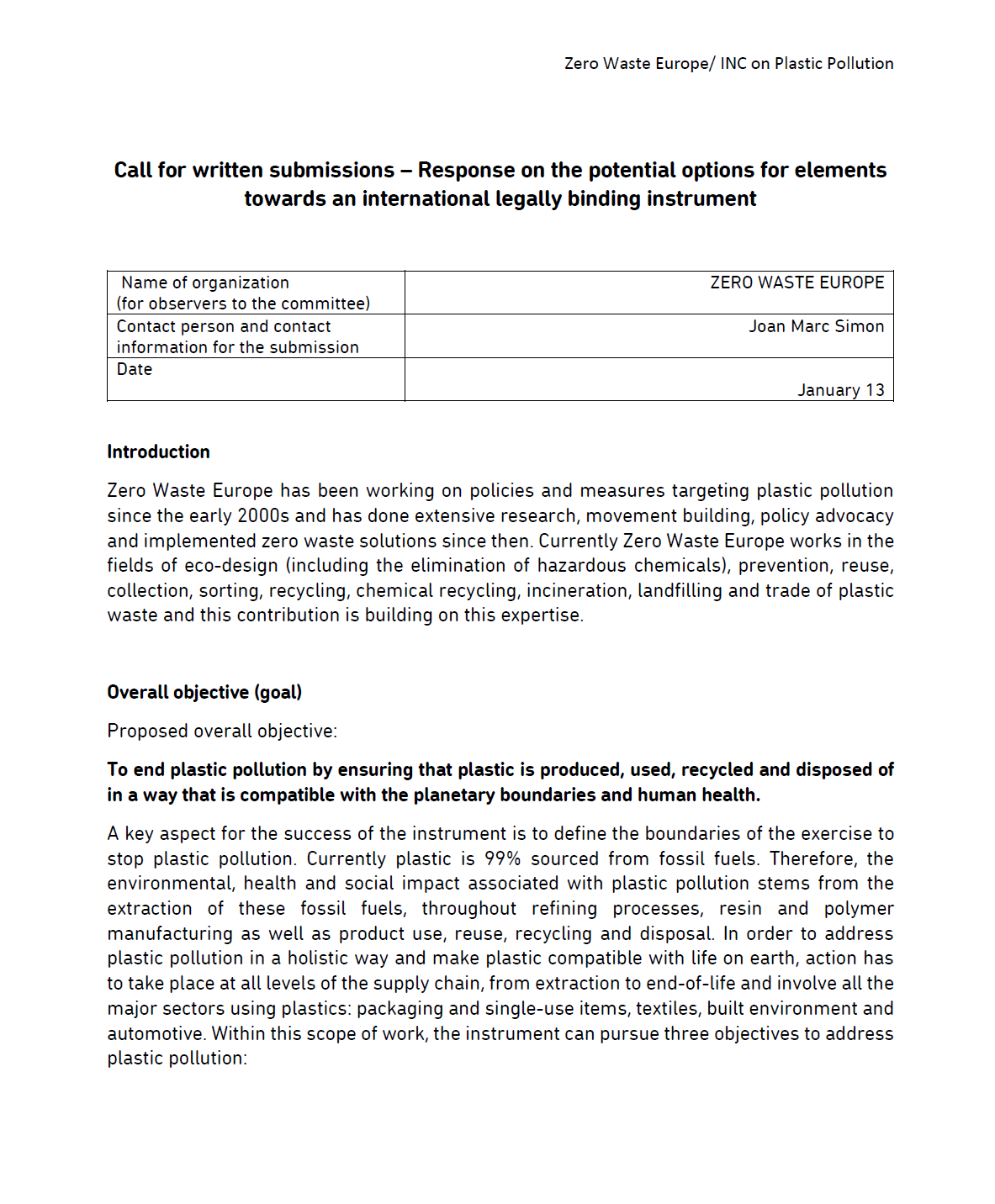
Zero Waste Europe has been working on policies and measures targeting plastic pollution since the early 2000s, has done extensive research, movement building, and policy advocacy, and has implemented zero waste solutions since then.
This document contains our submission to the second Intergovernmental Negotiating Committee (INC-2) to develop an international legally binding instrument on plastic pollution.
Available in English.
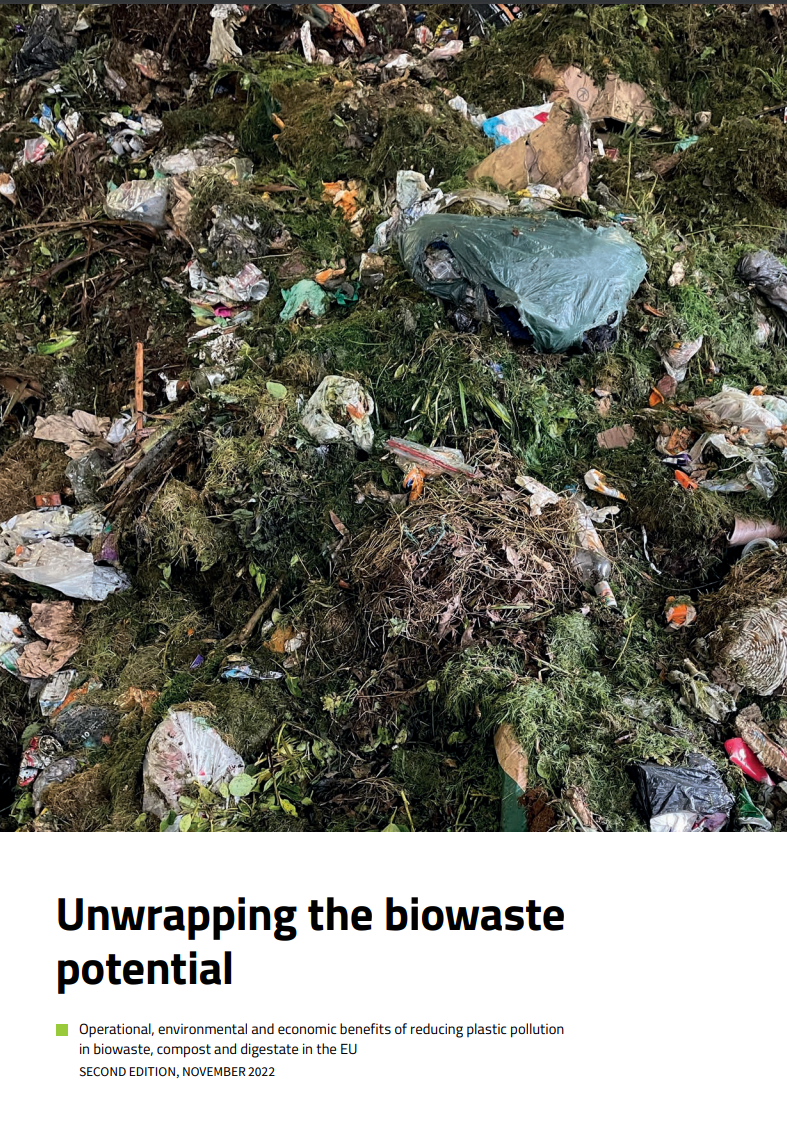
This report commissioned to European Circular Bioeconomy Policy Initiative by the EEB, the European Bioeconomy Bureau, CRE – Composting & Anaerobic Digestion Association of Ireland, Zero Waste Europe, and the Consorzio Italiano Compostatori, lays out the operational, environmental and economic benefits of reducing plastic pollution in biowaste, compost and digestate in the EU.
Available in English.
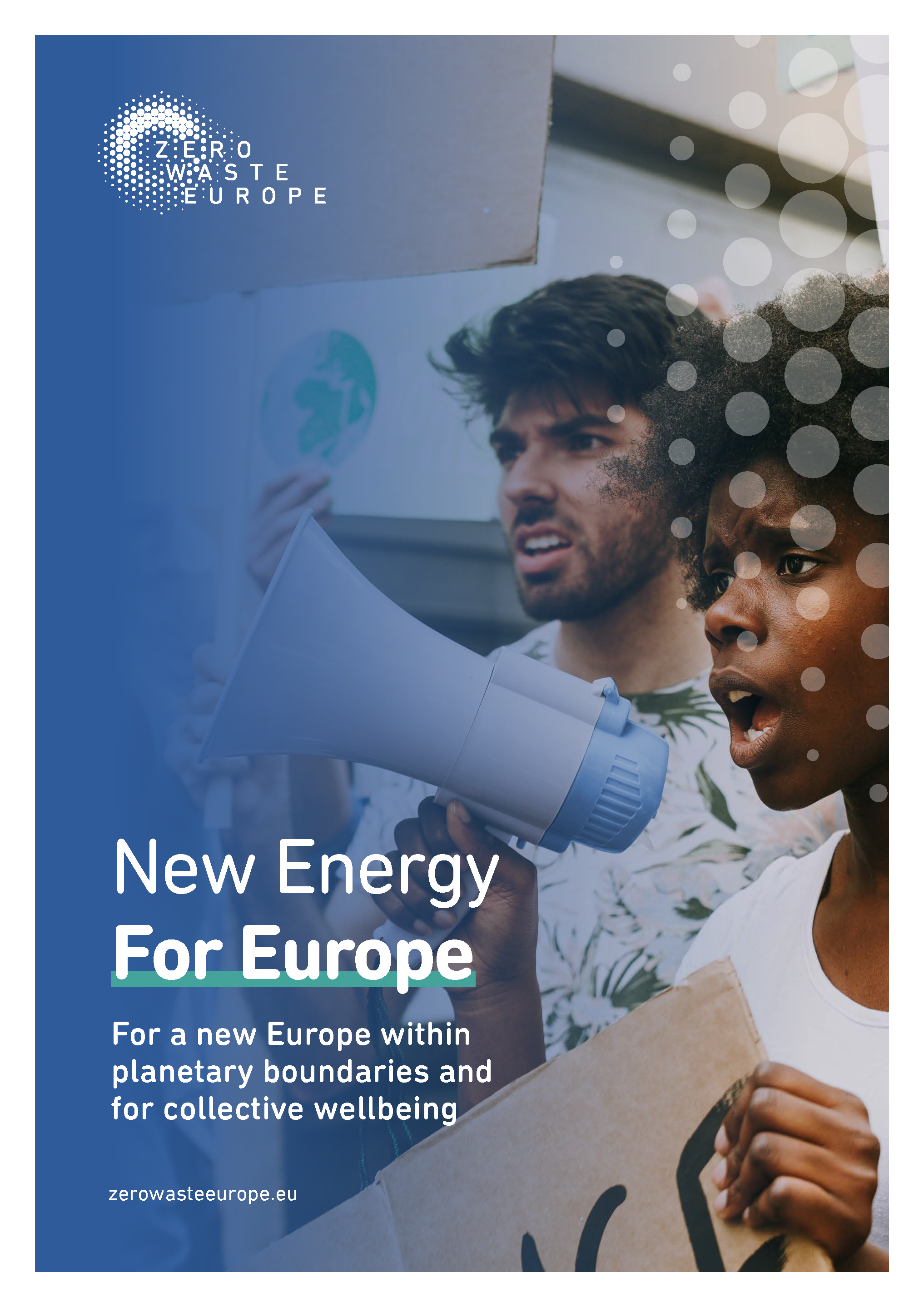
The European project as we know it is running out of steam and it is not capable of delivering on its objectives of peace, prosperity, and equality.
In order to stay within the commitment of 1.5°C degrees warming, the broken paradigm based on economic growth should be replaced with a new one. Our Manifesto calls on the need for building a new European project based on wellbeing, sufficiency, and resilience.
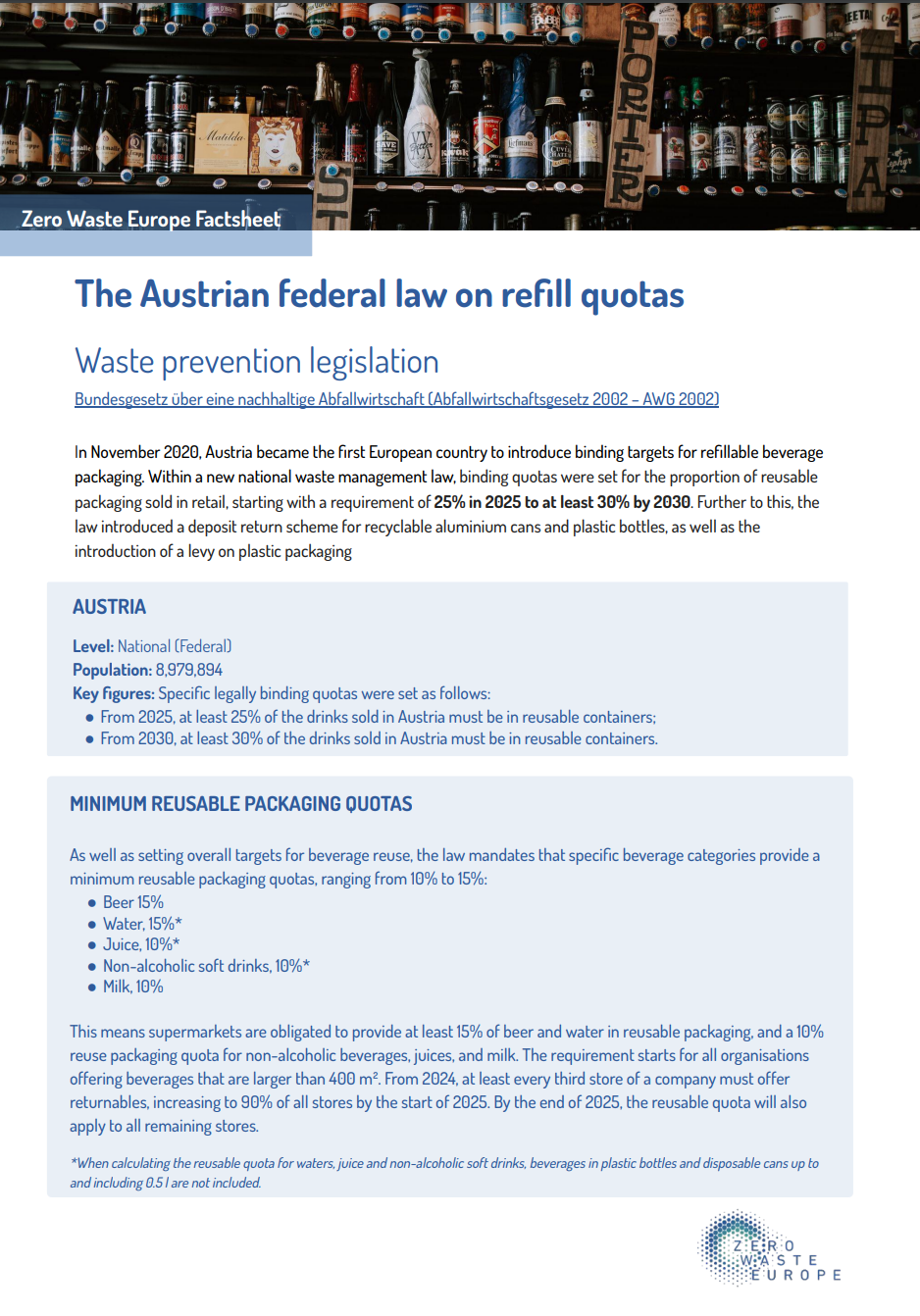
In November 2020, Austria became the first European country to introduce binding targets for refillable beverage packaging. Within a new national waste management law, binding quotas were set for the proportion of reusable packaging sold in retail, starting with a requirement of 25% in 2025 to at least 30% by 2030.
On the occasion of the European Week of Waste Reduction 2023, our factsheet takes a closer look at Austria’s inspiring work on refillable beverage packaging.
Available in English.
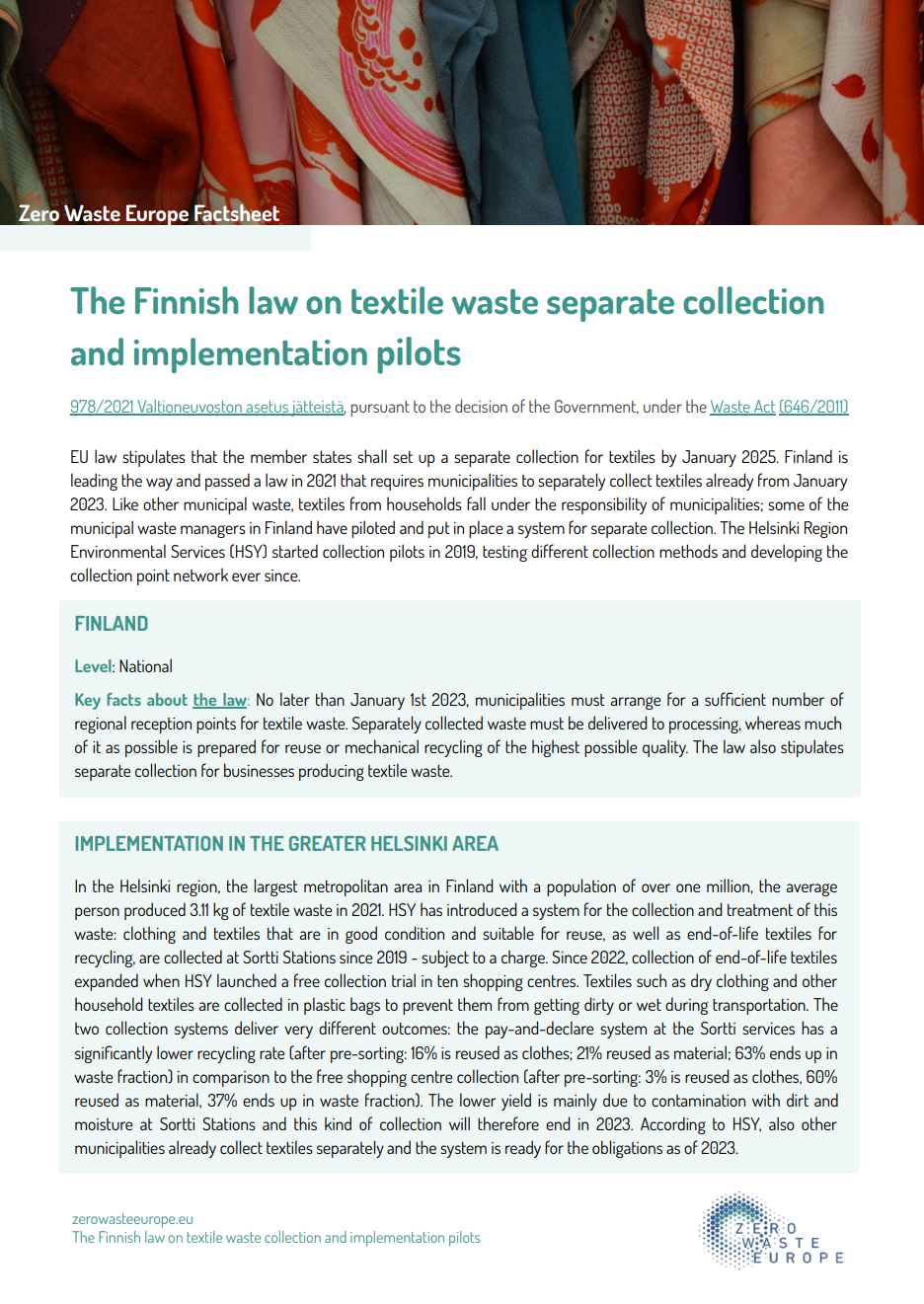
EU law stipulates that the member states shall set up a separate collection for textiles by January 2025. Finland is leading the way and passed a law in 2021 that requires municipalities to separately collect textiles already from January 2023.
On the occasion of the European Week of Waste Reduction 2023, our factsheet takes a closer look at Finland’s leading work on textile waste.
Available in English, Portuguese and Hungarian.

With the support of 10 Members of the European Parliament and 47 other NGOs, Zero Waste Europe has sent an open letter to EU Commissioner for Environment, Oceans and Fisheries, Virginijus Sinkevičius, calling for urgent action in order to tackle the waste crisis. In the letter, the signatories state their concerns regarding the Waste Framework Directive revision’s very limited scope. The signatories urge the Commission to adopt legally binding, European-level quantitative targets for municipal solid waste prevention.

Despite the good progress in EU legislation, the linear economy continues to be the norm in Europe. Most nutrients present in our waste still end up in landfills and incinerators; prevention and reuse lack the necessary infrastructure; packaging recycling rates are low and packaging reuse is even lower; fast fashion reigns free and recycling rates of textiles are close to zero. We often trust producers to come up with the needed solutions, resulting in cost-efficiency instead of a reduction of environmental impact.
The revision of the Waste Framework Directive, therefore, comes at a key time to organise the work for the coming decades. In this position, Zero Waste Europe, calls for its three key asks to be adopted.
Available in English.
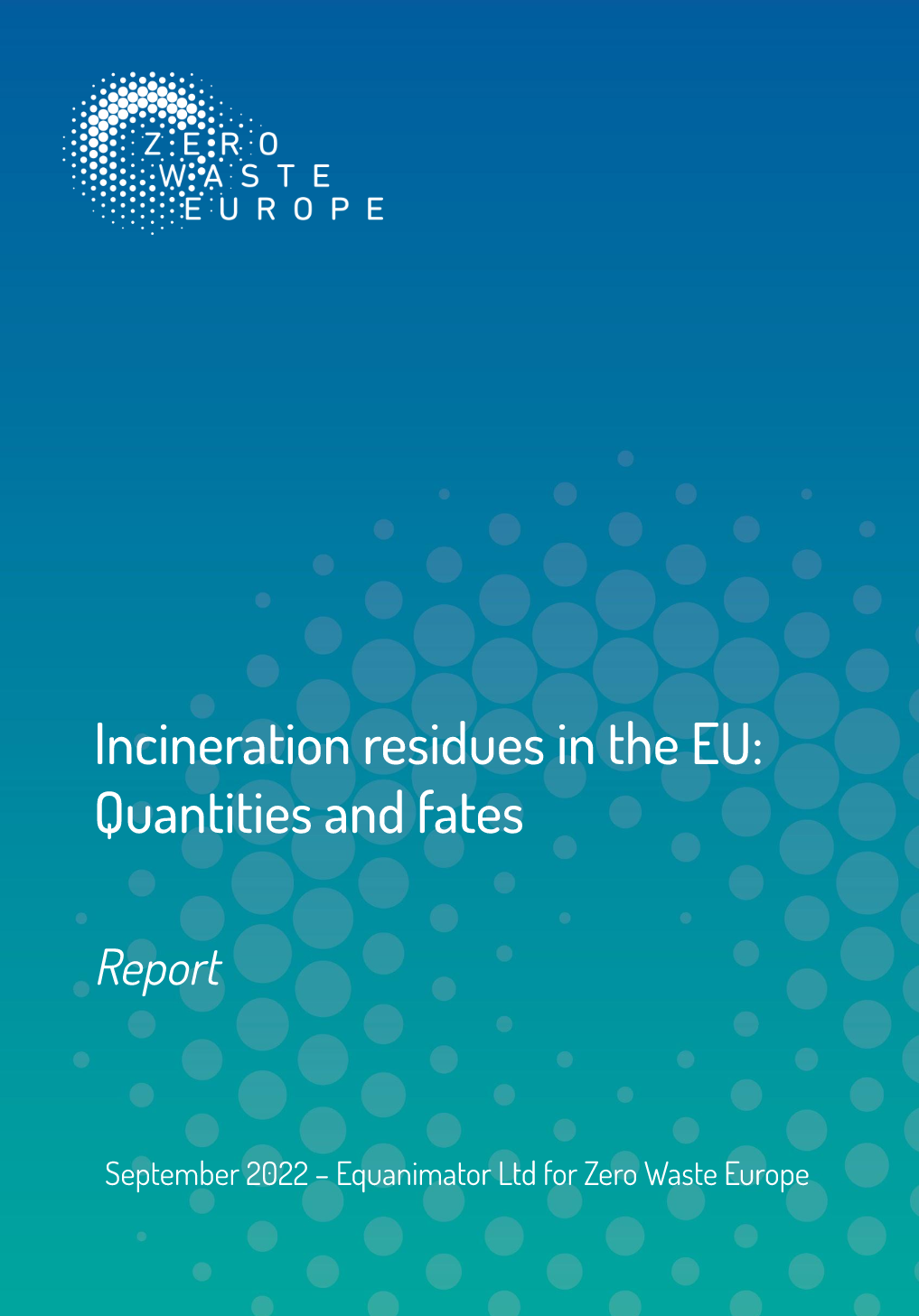
This study seeks to understand the quantity of residues generated by incineration of waste in the EU, and what happens to those residues – in particular, how much residue may be being landfilled.
Although the report is focused mainly on incineration, it sought to understand the quantity of residues from both incineration and co-incineration when considering ‘all wastes’. The Industrial Emissions Directive distinguishes these according to whether the facility is ‘dedicated to the thermal treatment of waste’ (incineration) or a facility whose main purpose is the generation of energy or production of material products (co-incineration).
Available in English (report and executive summary) and Polish (executive summary only).

Glass production, especially from primary sources, is a high energy-consuming process. One way to effectively reduce energy consumption and greenhouse gas (GHG) emissions from the repeated production of single-use glass is to retain material in a circular system – e.g. by utilising the cullet from container glass to produce new container glass, i.e. closed-loop recycling, and thereby removing the need to use glass from primary sources.
To understand the current circularity of single-use container glass in different geographical scopes, this study examines the mass flows of single-use glass packaging in four countries: Germany, France, the United Kingdom and the United States of America. For each case study, the key limitations to circularity are discussed and the potential to improving glass circularity are explored. The study also reviews other limitations and opportunities the single-use container glass industry is facing, and future developments being considered to overcome these challenges.
Available in English.
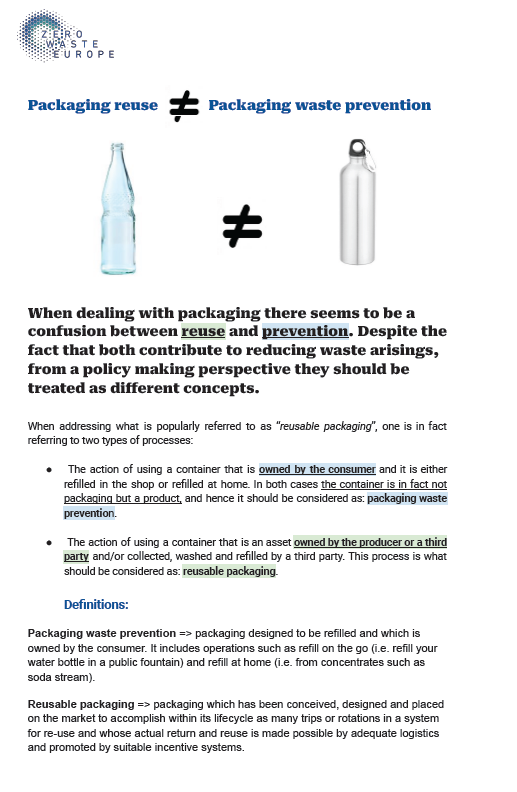
When dealing with packaging there seems to be confusion between reuse and prevention. Despite the fact that both contribute to reducing waste arisings, from a policy-making perspective they should be treated as different concepts.
Available in English.

This joint paper by ECOS, the European Environmental Bureau (EEB), Recycling Netwerk Benelux (RNB), RReuse and Zero Waste Europe (ZWE) shows the lack of effectiveness of existing waste prevention policies. We need European level quantitative waste prevention targets, as well as effective national measures. This position paper also highlights manufacturers’ role in reducing resource use and the size of the circular economy loop. Lastly, it offers some clarity on the differences between waste prevention and recycling, emphasising that recycling is lower in the European waste hierarchy than prevention.
Available in English.
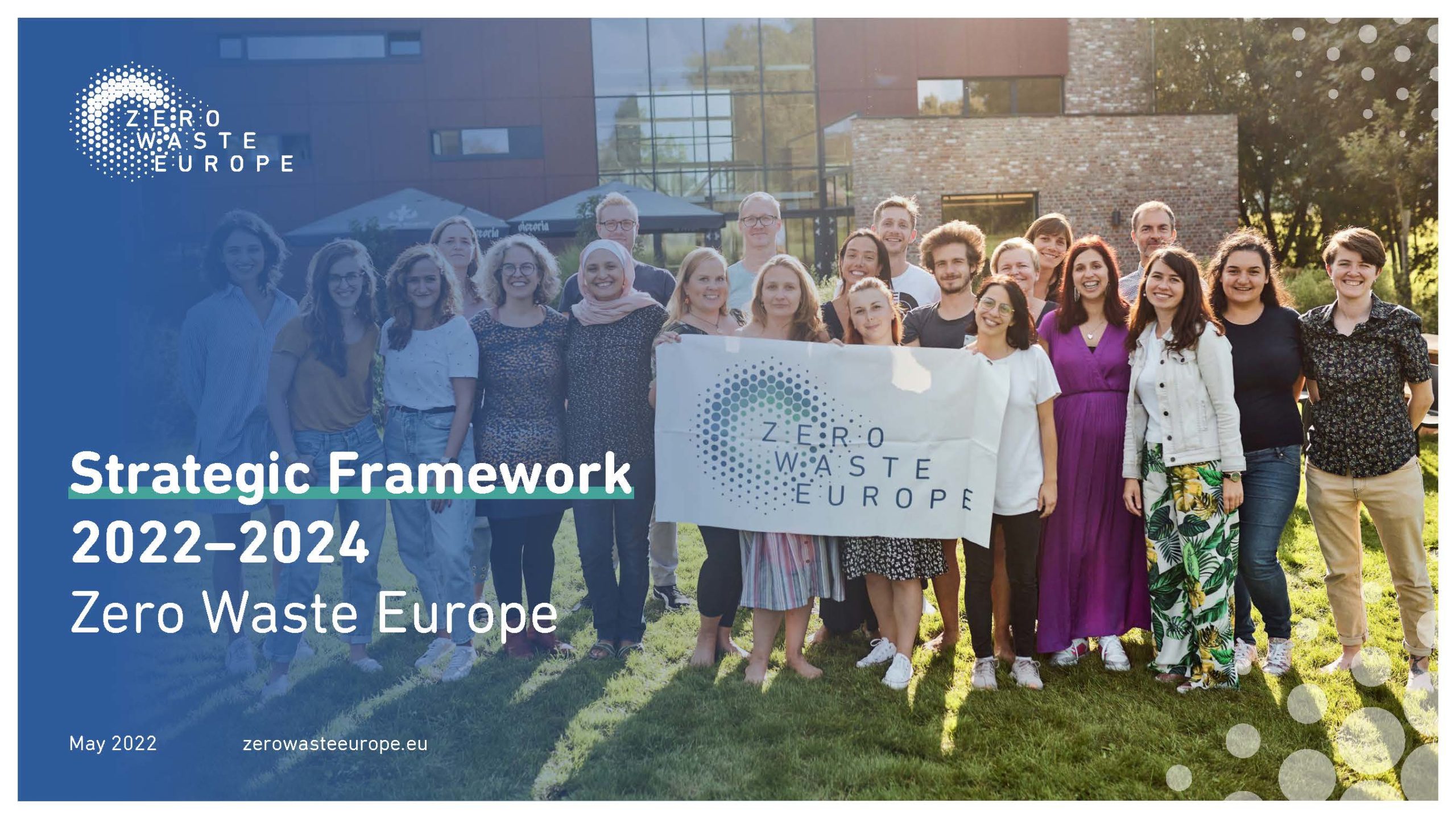
Europe is in the midst of a transition and zero waste is part of it.
Ten years ago, the concept of zero waste was laughed at. Today, zero waste is mainstream, from being considered a practical approach to implementing a circular economy to a trending lifestyle globally. The efforts from civil society groups in Europe and around the world pushed the debate higher in the waste hierarchy. If at any time over the last twenty years reuse and prevention had a chance, it is now. And ZWE is committed to bringing that change forward.
From a content perspective, for the next 3 years, we will focus on bringing IN incentives and funding for the transition, phasing OUT toxics, lifting UP reuse, pushing for BETTER recycling and bringing waste disposal DOWN.
Our Strategic Framework for 2022-24 outlines the ZWE roadmap and goals for the coming years, with the ultimate aim of helping us achieve a zero waste future for Europe (and for the world, while we’re at it).
Available in English.
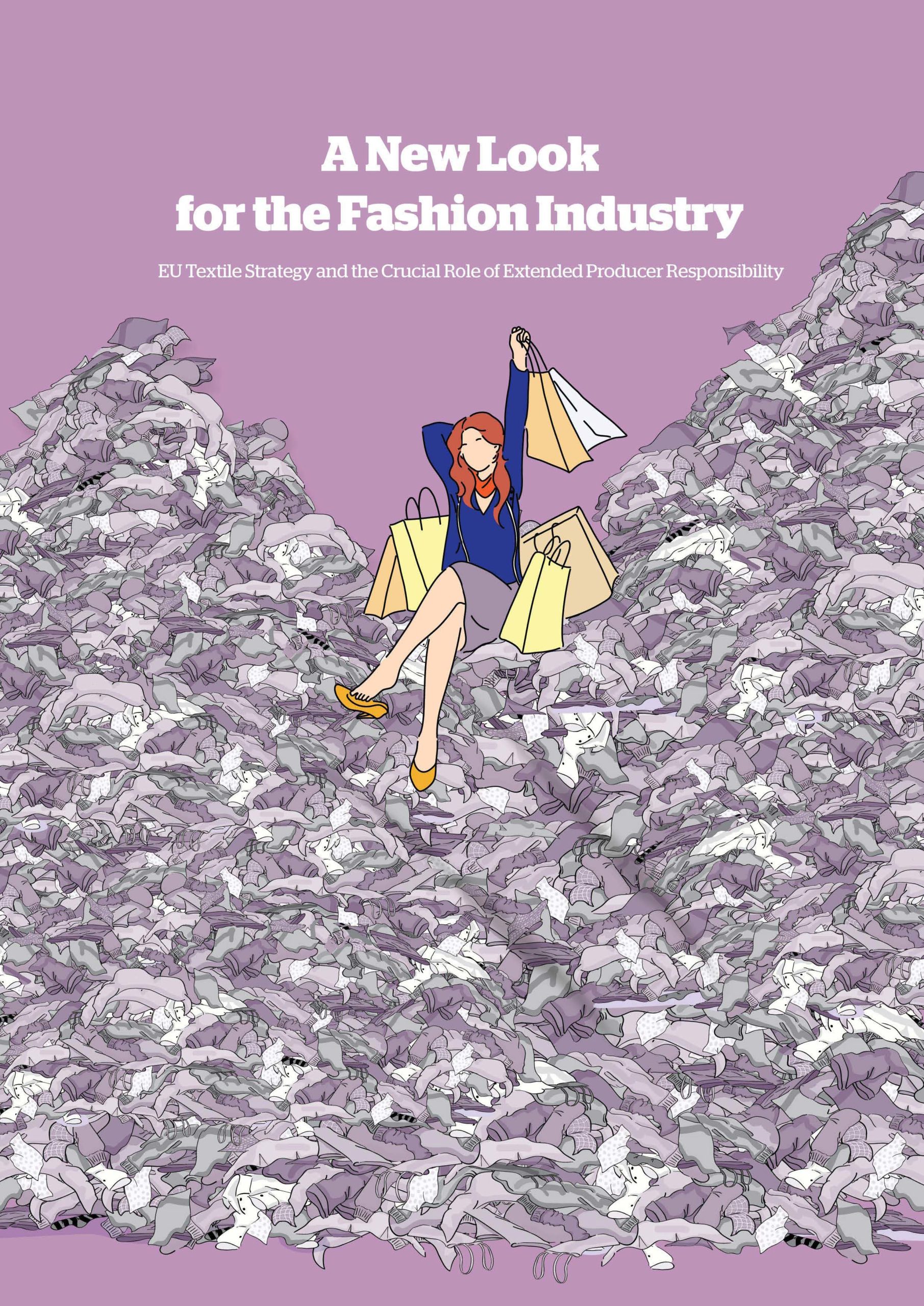
In the first half of 2022, the European Union (EU) will take the first steps in becoming a global leader in taking on an ugly problem: fast fashion and its mountains of waste.
The EU will become the first world region to target the flaws in fashion so directly, with regulations that promise to improve the circularity of textiles; stop overproduction; empower consumers to make more responsible choices; and make fashion brands accountable for their massive waste problem.
This political briefing by Changing Markets Foundation, the European Environmental Bureau, and Zero Waste Europe focuses on Extended Producer Responsibility (EPR), a powerful market-based tool that is expected to be at the centre of the European Commission’s upcoming Textiles Strategy.
Available in English.

Zero Waste Europe welcomes the European Commission’s initiative to revise the Waste Framework Directive with the aim to improve the overall environmental impact of waste management in the EU. The focus on qualitatively improving the recycling system, as well as the focus on waste prevention, are of high importance as, so far, the EU efforts on the circular economy have only led to a quantitative increase in recycling. This approach has led to significant progress, but these remain insufficient with regard to the EU environmental ambitions.
Through this revision process, Zero Waste Europe hopes to see the EU complementing its existing legislation with an integrated waste prevention framework, enabling high-quality recycling and a set of concrete tools to reduce resource use and enable waste prevention on the ground.
Available in English.

In a report commissioned to Eunomia by Zero Waste Europe, we bring you an analysis of the true state of circularity of Polyethylene terephthalate (PET) in bottles in Europe – including how much material from bottles is collected for recycling; how much of it is actually recycled; and how much of recycled PET is put into new bottles.
Full report available in English.
Executive Summary available in English, Croatian, German, and Hungarian.












